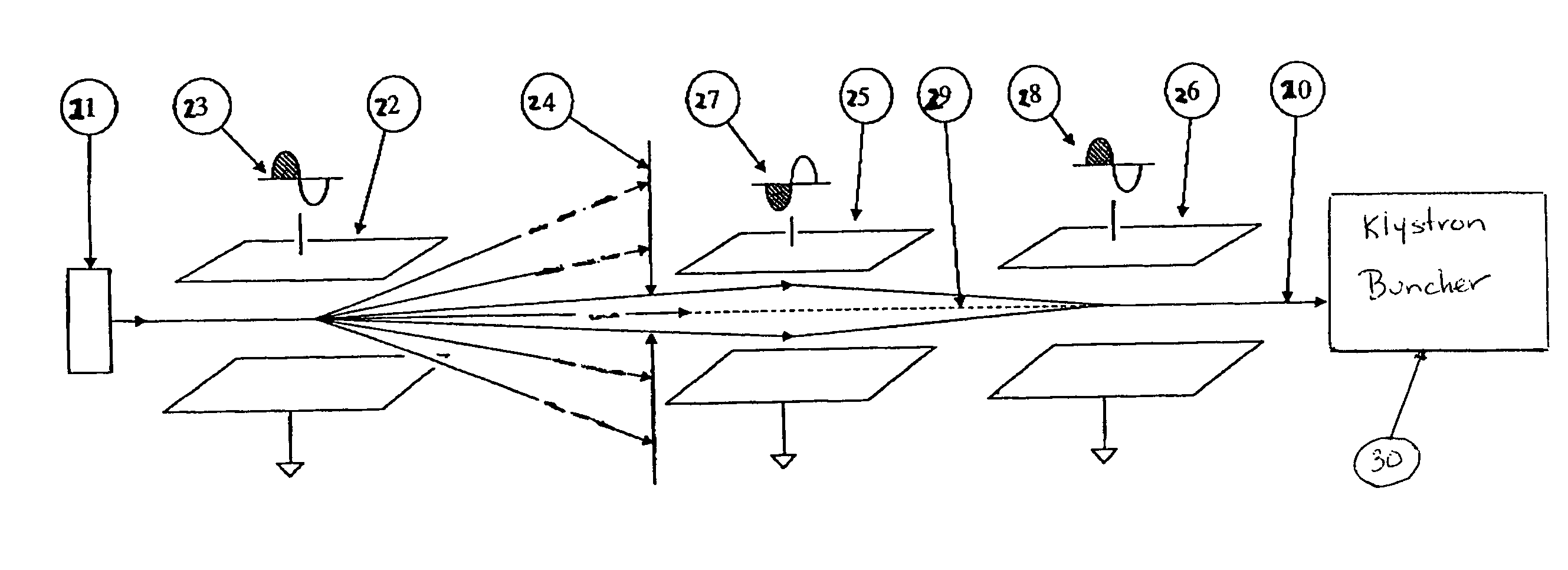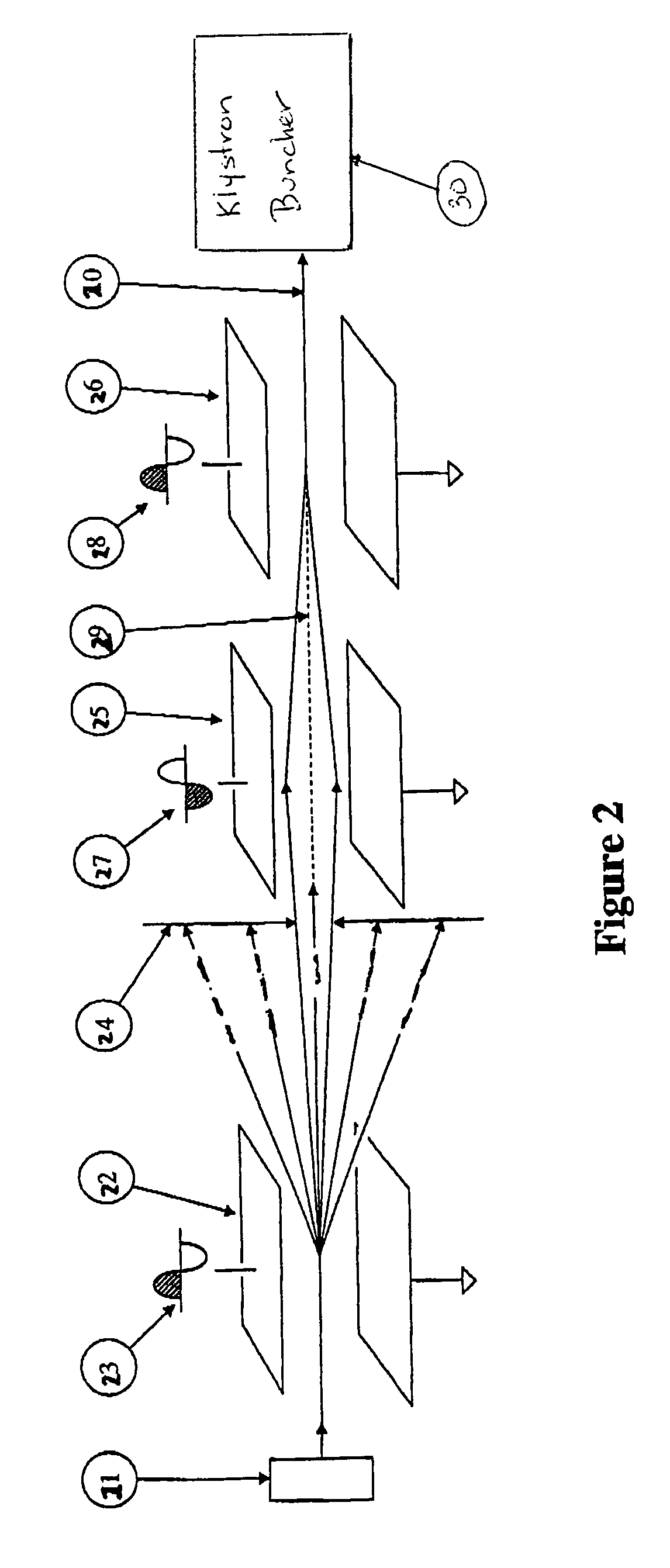Combinations of deflection chopping systems for minimizing energy spreads
a technology of deflection chopping and energy spread, which is applied in the field of construction and use of electrostatic chopping systems, can solve the problems of mechanical chopping not being practicable, reducing the pulse width only to be pushed, and making experimental measurements impractical
- Summary
- Abstract
- Description
- Claims
- Application Information
AI Technical Summary
Benefits of technology
Problems solved by technology
Method used
Image
Examples
Embodiment Construction
[0028]FIG. 1 presents the preferred embodiment. The first of two deflector units, 12 and 15, is located along the beam path. The chopper, 12, serves to scan the beam leaving ion source, 11, across an aperture plate, 14. Following this plate is located an additional deflector unit, 15. The phase and amplitude of the signals, 16, applied to this second deflector, 15 are adjusted in a manner such that the second deflector, 15, generates an energy modulation of the individual particles, according to equation 2, but with an appropriate phase and amplitude that will cancel the energy spread introduced by the primary chopper, 12. The overall energy spread imposed on the beam by the pair of deflector units, 2 and 5 can be adjusted to be close to zero.
[0029]Referring again to FIG. 1, it can be seen that the first deflector, 12, is excited using a high-voltage radiofrequency whose waveform, 13, is sinusoidal. The effect is to introduce a time-dependent deflection angle to the beam leaving the...
PUM
 Login to View More
Login to View More Abstract
Description
Claims
Application Information
 Login to View More
Login to View More - R&D
- Intellectual Property
- Life Sciences
- Materials
- Tech Scout
- Unparalleled Data Quality
- Higher Quality Content
- 60% Fewer Hallucinations
Browse by: Latest US Patents, China's latest patents, Technical Efficacy Thesaurus, Application Domain, Technology Topic, Popular Technical Reports.
© 2025 PatSnap. All rights reserved.Legal|Privacy policy|Modern Slavery Act Transparency Statement|Sitemap|About US| Contact US: help@patsnap.com



